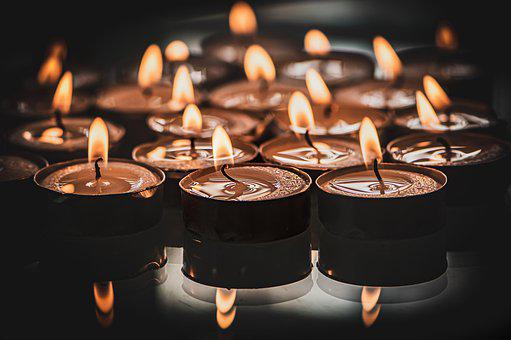His mysterious soul has rested under the imposing tombstones of the new Guillotière cemetery for more than a century. Eugène Vintras, died in December 1875 between Rhône and Saône and buried in 7e district, left behind a dark story worthy of a bad horror TV movie.
This article is part of our summer saga around witchcraft and the occult in Lyon. All our articles.
This character with a large forehead and a full beard intrigues to the point of being the subject of a thesis called A case of mystical and political delirium in the 19th centuryeas part of a doctorate in medicine in 1919. At the time, the author Marie-Reine Agnel-Billoud described Eugène Vintras as “perverse, mythomaniac, mystical and erotic moron, afflicted with delirium, incidentally hallucinatory and interpretative, but above all imaginative, with ideas of the grandeur of religious mission and political reform”. Just that.
Wandering
It was in Bayeux, in Normandy, that Pierre-Eugène-Michel Vintras was born on April 7, 1807, to a laundress mother-daughter who eventually abandoned him around the age of 10.
The reasons which will lead Marie Vintras to leave her son at the general hospital for foundlings remain unclear. “This abandonment, caused by misery according to some, should be attributed, according to others, to the child’s natural wickedness, perverse and unsociable”, emphasizes Marie-Reine Agnel-Billoud. No document allows, in fact, to be formal as to the personality of the young Eugene.
One thing is certain: once out of the establishment intended for abandoned children, the boy shows a certain instability, chaining various activities (tailor, servant, peddler, etc.), between Paris and his native Normandy, marrying in the age of 20 Marie Vinard, herself a laundress, and being sentenced in January 1833 to fifteen days in prison for having tried to escape the effects of a seizure of her property requested by one of her creditors.
A very curious notary
“A first turning point occurred in 1838 when, “after mature reflections on the times of his Christian life”he goes to the Black Virgin of La Délivrande, the oldest pilgrimage in Normandy intended for its visitors to “to advance in safety through the dangers of this world” », recounts the Lyonnais historian Jean-Pierre Chantin in From sects to heresies.
It was there that he met Ferdinand Geoffroi, a former notary convicted of breach of trust which allowed him to become manager of a cardboard factory in Tilly-sur-Seulles.
Ferdinand Geoffroi stands out for his attraction to dubious theories: he defends Karl-Wilhelm Naundorff, a watchmaker who claims to be the former Dauphin Louis XVII, and is “affiliated with a politico-mystical movement (Society of Saint John the Baptist, editor’s note), appeared in 1772, and represented by The three Marys of the Gospel, three women who call themselves inspired », notes Jean-Pierre Chantin. The character will play a crucial role in the career of Eugène Vintras.
Conversation with Jesus
Everything changed in 1839 for the then 31-year-old Norman. He claims to receive, on several occasions, the visit of Saint Joseph in the guise of a bearded old man dressed in rags. Then the apparitions multiplied: Mary, the Archangel Michael and Jesus himself came to deliver “messages both political and religious, in a sort of synthesis of the movements of which he is the heir, that of the society of Saint John the Baptist and that of Naundorff”specifies the work From sects to heresies.
Eugène Vintras, who henceforth calls himself Pierre-Michel, thus founds the Work of Mercy which will soon spread throughout France, including Lyon, in the form of “septaines”. He claims to be the reincarnation of the prophet Elijah who came to announce a new era, the reign of the Holy Spirit.
A movement considered a sect
The appearances of bloody hosts and his mysterious ability to read and write Latin, when he was almost illiterate, convinced thousands of followers. But the Work of Mercy, considered a sect, is also the scene of icy drifts.
In her thesis, Marie-Reine Agnel-Billoud explains that “Obscene acts were committed daily among the children of the work”. Eugène Vintras would thus himself have had relations with the son of Ferdinand Geoffroi, Alexandre who was renamed Géhoraël.
Sentenced to five years in prison for fraud by the courts and rejected by the Church for witchcraft and satanism, Eugène Vintras took refuge in London for a time before settling in Lyon, “new great center of his Church”. Upon his death, Abbé Boullan will try to take over. He was little recognized by the followers of Vintras, whose doctrine ended up being diluted over time.
This article is part of our summer saga around witchcraft and the occult in Lyon. All our articles.
Did you enjoy this article? Continue reading and benefit from all of our articles by subscribing to Tribune de Lyon for 4.9 euros per month. To get to know us better, you can also register for free at our weekly newsletter.
We wish to say thanks to the writer of this post for this amazing material
The mystical delusions of Eugène Vintras – Tribune de Lyon
Our social media pages here and other pages on related topics here.https://nimblespirit.com/related-pages/

